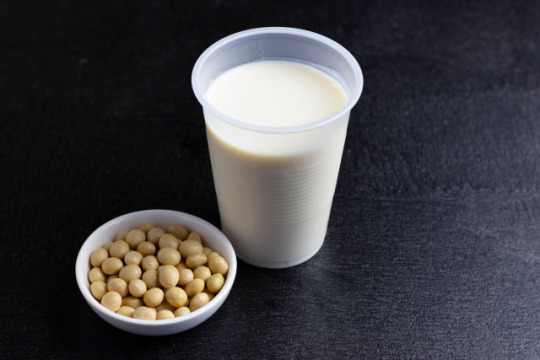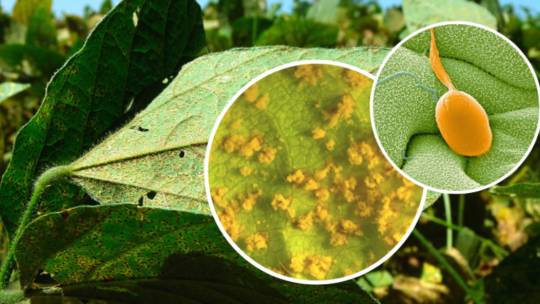#soybean
Text

UHHHH soybean brainrot
10 notes
·
View notes
Text


Nestle KitKat Sakura & Roasted Soybean powder


2 notes
·
View notes
Text
Innovative Yield Trait Enhances Soybean Production: A Closer Look at Texas Crop Science's Breakthrough
Key Takeaways
Yield Increase Reported: Texas Crop Science (TCS) announced a 21% increase in soybean yield due to its new yield trait, aiming to impact the agricultural sector significantly.
Potential Revenue Growth: This development could lead to an additional $121 per acre for soybean growers in the U.S., based on current market values.
Global Scale Impact: The yield trait by TCS is positioned…

View On WordPress
0 notes
Text

#Wheat#Bajra#Red Gram#Red Chili#Soybean#Black Gram#Green Gram#Horse Gram#White Jower#Bengal Gram#Coriander Seed#Alasande Gram#Tamarind Fruit
0 notes
Text
Navigating the Dynamics of the Global Soybean Market: Trends, Challenges, and Opportunities

The soybean market refers to the global economic ecosystem surrounding the production, trade, and consumption of soybeans, one of the most significant agricultural commodities worldwide. Soybeans, scientifically known as Glycine max, are a leguminous crop primarily cultivated for their high protein content and versatile applications in food, feed, and industrial processes. The soybean market plays a pivotal role in various sectors, including agriculture, food processing, livestock farming, biofuel production, and international trade.
Overview of Soybean Production
Soybeans are predominantly grown in regions with temperate climates, with the United States, Brazil, Argentina, and China being the leading producers. The cultivation of soybeans involves extensive agricultural practices, including land preparation, planting, cultivation, and harvesting. The crop's adaptability to different soil types and its nitrogen-fixing abilities make it a favored choice for crop rotation systems, contributing to sustainable farming practices.
Factors Influencing the Soybean Market
Several factors influence the dynamics of the soybean market, including:
Weather Conditions: Weather patterns, such as droughts, floods, or adverse climatic events, can significantly impact soybean yields, leading to fluctuations in supply and prices.
Demand from China: China stands as the largest importer of soybeans globally, primarily using them for livestock feed and oil extraction. Changes in Chinese consumption patterns and trade policies can have profound effects on global soybean prices.
Biofuel Production: The growing demand for biodiesel has increased the utilization of soybean oil as a feedstock, affecting the demand and prices of soybeans.
Trade Policies and Tariffs: Trade agreements, tariffs, and geopolitical tensions among major soybean-producing and consuming countries influence international soybean trade flows and market dynamics.
Genetic Innovations: Advancements in biotechnology have led to the development of genetically modified (GM) soybean varieties with traits such as herbicide resistance and enhanced yields, impacting production efficiency and market competitiveness.
Global Trade and Consumption Patterns
The soybean market is highly globalized, with significant volumes of soybeans and soybean products traded internationally each year. The United States, Brazil, and Argentina are the major exporters, while China, the European Union, and Southeast Asian countries are prominent importers.
Soybeans are processed into various products, including soybean meal, soybean oil, and soy-based food products. Soybean meal is a vital component of animal feed, particularly for poultry, swine, and cattle. Soybean oil is used for cooking, food processing, and industrial applications, including biodiesel production.
Environmental and Sustainability Considerations
The expansion of soybean cultivation has raised concerns about its environmental impact, including deforestation, habitat destruction, and biodiversity loss, primarily in regions like the Amazon rainforest and the Cerrado biome in Brazil. Sustainable soybean production practices, such as zero-deforestation commitments, conservation agriculture, and certification schemes (e.g., Roundtable on Sustainable Soy), are being adopted to address these challenges and promote environmental stewardship in the soybean industry.
Market Trends and Innovations
The soybean market is witnessing several notable trends and innovations that are reshaping its landscape:
Rise of Plant-Based Proteins: Growing awareness of health, environmental, and ethical concerns has fueled the demand for plant-based proteins, including soy-based alternatives to meat and dairy products. This trend is driven by consumers seeking healthier and more sustainable dietary options, contributing to the expansion of the soy-based food industry.
Functional Food Applications: Soybeans are recognized for their nutritional benefits, being rich sources of protein, fiber, vitamins, and minerals. As a result, soy-based ingredients are increasingly used in the formulation of functional foods and dietary supplements targeting specific health benefits, such as heart health, bone health, and weight management.
Technological Advancements in Processing: Innovations in processing technologies have enabled the extraction and refinement of soybean components with improved efficiency and quality. These advancements have led to the development of value-added products like high-protein soy isolates, soy protein concentrates, and specialty soy ingredients tailored to meet diverse consumer needs and preferences.
Expansion of Non-Food Applications: Beyond traditional food and feed uses, soybeans are finding applications in various non-food sectors, including cosmetics, pharmaceuticals, and industrial materials. Soy-derived compounds such as soy lecithin, soy wax, and soy-based polymers are valued for their functional properties and renewable nature, driving their adoption in a range of products.
Future Outlook
The soybean market is expected to continue evolving in response to changing global demographics, dietary preferences, technological innovations, and environmental concerns. Key trends shaping the future of the soybean market include the increasing demand for plant-based proteins, advancements in biotechnology, sustainable sourcing practices, and shifts in trade dynamics.
0 notes
Text

#Onion#Foxnut#Coconut#Soybean#Bengal Gram#Green chili#Sharbati Wheat#Turmeric Powder#Bhopal#India#Cumin Seeds/Powder#Turmeric Finger
0 notes
Note
we need soybean updates!!


as God intended
8 notes
·
View notes
Photo

✿ 無調整豆乳と調製豆乳の違い
・まず、豆乳には「無調整豆乳」「調製豆乳」「豆乳飲料」の3種類があります。この3種類の大きな違いは、大豆固形分の割合にあります。大豆固形分とは豆乳の水分を飛ばしたときに残る大豆の成分量です。割合が高い程、成分が濃い豆乳です。無調整豆乳は豆乳の中で一番大豆の成分濃度が濃く、栄養を多く摂れます。
・調製豆乳は飲みやすくするために砂糖や食塩、植物油脂、香料などが添加されているので、無調整豆乳よりもカロリー、糖質、脂質が高いです。コップ1杯飲む場合は約200mlなので、表の数値の2倍の栄養素が含まれています。コップ1杯で比べると無調整豆乳と調製豆乳は約40kcalの違いがあります。健康のために豆乳を飲むのであれば、無調整豆乳を選んだ方がヘルシーです。
1 note
·
View note
Text

Source : Google
#soymilk#soy milk#soybean#soybeans#soy#soys#benefit#benefits#fact#facts#fun fact#fun facts#health#healthy#heart#hearts#skin#hair#bean#beans
0 notes
Photo

Mung Bean Soybean Sprouts StirFry
0 notes
Text
Biofungicide based on essential oils developed to combat soybean disease

- By Rodrigo de Oliveira Andrade , Agência FAPESP -
Researchers at Linax, a company based in Votuporanga, São Paulo state, Brazil, have developed a fungicide made of essential oils, with low environmental impact and high economic potential, for use against soybean disease.
The solution was developed via a project supported by the FAPESP Innovative Research in Small Business Program (PIPE). It consists of a blend of oils extracted from different plants and encapsulated by natural polymers which release the substance slowly and gradually, extending its period of action and reducing the risk of fungal resistance development.
Prototypes of the technology were tested against Phakopsora pachyrhizi, the fungus that causes Asian soybean rust, one of the worst diseases affecting this crop in Brazil. It attacks the leaves, undermining their ability to perform photosynthesis and form healthy grains. If it is not properly controlled, it can ruin up to 90% of a plantation and cause massive financial losses.
The solution developed by Linax is as effective as the fungicides most used to combat the disease in Brazil. “Application of a half-dose of our solution in conjunction with a half-dose of conventional fungicide is more effective than application of conventional fungicide alone,” says Nilson Borlina Maia, an agricultural engineer and a partner in Linax. “So adding a dose of our solution based on essential oils reduces the volume of conventional fungicides in use, which is positive because they’re harmful to human and animal health and to the environment.”
The technology is the result of a partnership between Linax and Santa Clara Group, an agricultural input supplier in Ribeirão Preto, São Paulo state. The group recently announced it was acquiring Linax, which would become part of Santa Clara Agrociência, its biopesticide division.
Linax’s fungicide will be launched this year. According to Maia, the same strategy will be used against fungi that cause disease in other crops, and environmentally sustainable solutions are under development to boost the effectiveness of biological pesticides. “We’re conducting a project with UNESP [São Paulo State University] to encapsulate fungi and bacteria that can be used against crop pests and diseases, thus protecting them against ultraviolet radiation and enhancing their viability and effectiveness,” he said.
Innovation track record
Linax has a track record of innovations involving essential oils and natural polymers, many of which were developed with the support of PIPE and the Business Research Support Program (PAPPE) run by FAPESP in partnership with the Brazilian Innovation Agency (FINEP), an arm of the Ministry of Science, Technology and Innovation (MCTI).
Linax itself was born from a project supported by PIPE, starting in 2004, to extract linalool oil from basil (Ocimum basilicum). Linalool is widely used by the perfume industry and is a key ingredient of Chanel No. 5. It has long been extracted from Aniba rosaeodora, a severely endangered tree native to the Amazon, leading to its near-extinction. According to a 2002 estimate, 2 million of these trees had been felled for linalool harvesting up until then. The species is now found only in a few parts of Amazonas state, including the municipalities of Parintins, Maués, Presidente Figueiredo and Novo Aripuanã.
The research that gave rise to the project and the firm began years earlier, in 1998, when Maia set out to screen 18 plants for linalool, including coriander, bay laurel (Laurus nobilis), cinnamon and orange, as well as basil. “I was looking for an alternative to the destruction of A. rosaeodora,” he said.
He soon ruled out bay laurel. “The tree contains a lot of linalool but takes a long time to reach adulthood, making its cultivation for commercial extraction unviable. Coriander and cinnamon don’t contain linalool. Orange trees contain very little,” he recalled.
Although he failed to find a plant with as much linalool as A. rosaeodora, where it can reach 90% of the plant’s essential oil, Maia found basil to be an economically viable source of natural oil that can substitute for linalool in many cosmetics, perfumes and other hygiene and beauty products.
The project was supported at the time by the Campinas Institute of Agronomy (IAC, an arm of the São Paulo State Department of Agriculture and Supply). Large numbers of basil seedlings were produced and commercial plantations were quickly established. To facilitate extraction of essential oil in the laboratory. Maia developed a stainless steel mini-distiller that does not release toxic residues and produces high-quality output. “In conventional glass distillers, which are hard to handle, loading and unloading the plant material takes about an hour on average. With the mini-distiller we created, it takes about a minute and the distilling is controlled by an automated electrical system,” he said.
Linax presented the mini-distiller at the 3rd Brazilian Symposium on Essential Oils in Campinas in November 2005, which opened up new business opportunities for the firm. “We began to produce and market essential oil distillers for scientific laboratories, perfumeries and small, medium and large farmers. We’ve sold more than 200 units since then,” Maia said.
In 2020, Linax was awarded funding by FAPESP and FINEP via the PIPE-PAPPE Grant Program to develop an automated control system for its distillers based on artificial intelligence software. “The system controls and monitors the entire essential oil distilling process, while also enhancing its efficiency,” he said.
Linax has now fully mastered all stages of linalool production. It helps clients produce seedlings and grow the varieties they need. It can also assist harvesting and distilling of essential oil with 95% purity, assuring environmental, economic and social sustainability. “Linax also helps clients produce other essential oils, which can be used to develop new products that don’t yet exist on the market,” Maia said.
The strategy offers family farmers in the Votuporanga area an opportunity for extra income and helps strengthen the production of essential oils as a new agribusiness segment.
This text was originally published by FAPESP Agency according to Creative Commons license CC-BY-NC-ND. Read the original here.
--
Read Also
Pesticide seed coatings are common yet underreported
#Biofungicide#brazil#environment#sustainability#soybean#agriculture#plants#food#pesticide#farming#linax#ecology
0 notes
Text

7 notes
·
View notes
Text
2Blades's Partnership With Bayer Crop Science Yields Achievements Against Asian Soybean Rust
Key Takeaways:
Successful identification of resistance genes against Asian Soybean Rust (ASR) through a collaboration between 2Blades and Bayer Crop Science.
The project, which began in 2018 and extended in 2023, also involved The Sainsbury Laboratory and Universidade Federal de Viçosa.
This discovery enables Bayer to develop targeted and effective strategies to control ASR, a major threat to…

View On WordPress
0 notes
Text

#Wheat#Bajra#Red Gram#Red Chili#Soybean#Black Gram#Green Gram#Horse Gram#White Jower#Bengal Gram#Coriander Seed#Alasande Gram#Tamarind Fruit
0 notes
Text
Ginger Edamame Bacon Soybean Soup

0 notes